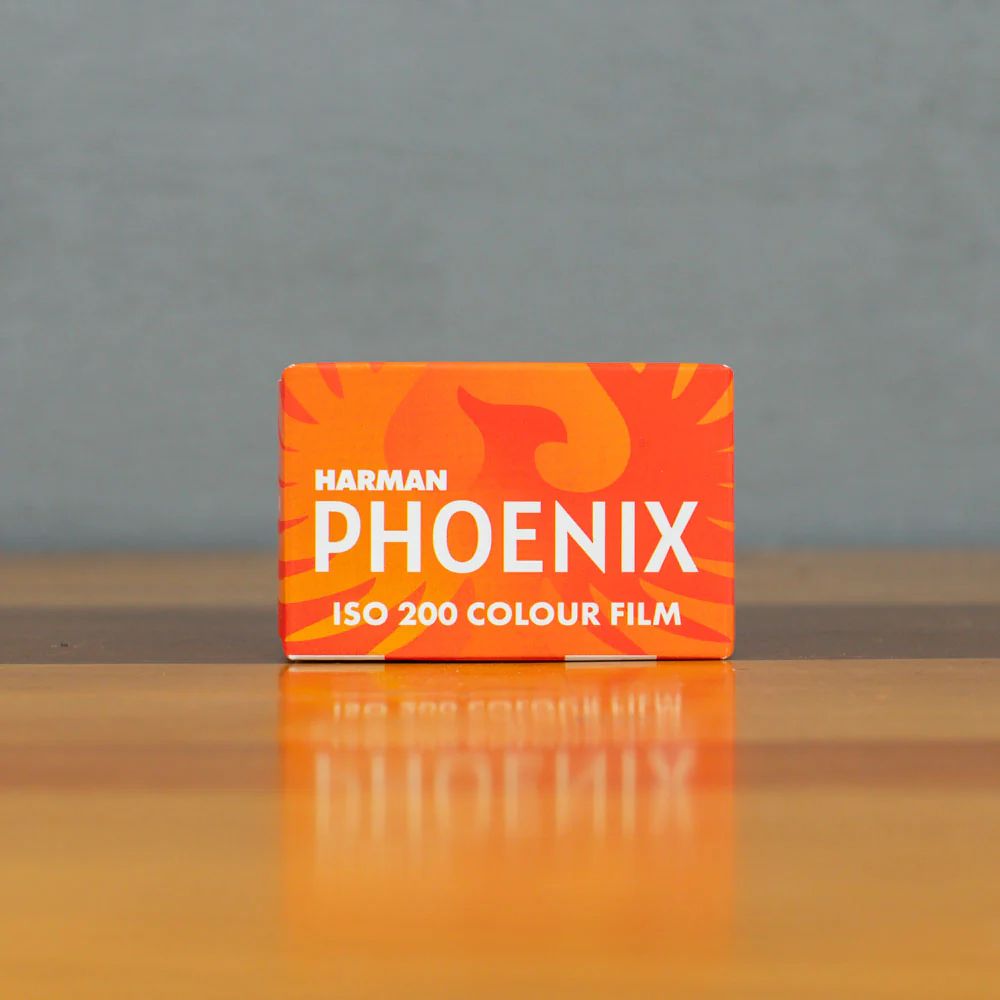Key Takeaways
Harman Phoenix is a color negative film with an ISO of 200, suitable for a variety of lighting conditions.
It is known for its vibrant colors, high contrast, and noticeable grain, giving photos a distinctive look.
The film can be developed using the standard C-41 process, making it accessible for most labs.
Photographers should be aware of its unique halation effects, which can add an artistic touch to images.
Harman Phoenix is an excellent film for those looking to explore the boundaries of color film photography.
Pros and Cons Table
|
Pros |
Cons |
|---|---|
|
Vibrant and lively colors |
Pronounced grain may not be to everyone’s taste |
|
High contrast adds drama to images |
Less forgiving with exposure errors |
|
Unique halation effect |
Potential for color shifts in challenging lighting |
|
Standard C-41 processing |
Limited formats available currently |
Vibrant Color Palette
One of the first things you’ll notice after developing a roll of Harman Phoenix is the color rendition. The colors leap from the print with a vivacity that’s both surprising and delightful. This isn’t the muted, vintage look of some films; it’s modern, it’s bold, and it’s here to make a statement. The reds are fiery, the blues deep, and the greens lush—perfect for photographers who want their images to stand out.

High Contrast and Saturation
The contrast level of Harman Phoenix can turn an ordinary scene into a dramatic tableau. It carves out the shadows and highlights often giving the impression of a scene bathed in golden hour light, regardless of the actual time of day. This characteristic can be a boon for your composition, emphasizing shapes and leading lines that might otherwise go unnoticed.
Grain Texture and Aesthetic
Grain is an inherent part of film photography, and Harman Phoenix embraces this with a pronounced texture that imparts a timeless quality to your images. While some may prefer a smoother look, the grain here adds character. It’s a reminder that you’re working with an organic medium, one that reacts to light in its own unique way. Embrace the grain; let it add depth and narrative to your photos.
Film’s Predictability and Ease of Use
While Harman Phoenix does have its quirks, it’s consistent enough that you can learn its behavior quickly. Stick to well-lit environments or use a flash indoors, and you’ll find it to be a reliable companion. Its compatibility with the C-41 process means you won’t have any trouble getting it developed at your local lab, and you can start to anticipate the results with just a few rolls under your belt.
Pricing
When it comes to film, cost is always a consideration. Harman Phoenix is positioned in the market as a premium product, and its price reflects that. You can expect to pay slightly more than you would for a standard consumer film, but not as much as some of the professional-grade options out there. It’s a middle ground that’s justified by its performance.
For a 35mm roll of Harman Phoenix, you’re likely to spend around $11.99 This is a small premium over the more common films, but for the unique results it delivers, many photographers find it well worth the investment.
Get one from https://www.freestylephoto.com/
Or if you are from UK you can order here for 12.99 Pounds
Indoor with Flash Considerations
Using Harman Phoenix indoors can be a bit tricky due to its ISO 200 speed, which is better suited for daylight. However, with a good flash, you can still capture the film’s vibrant colors and strong contrasts. When using a flash, aim for a bounce technique off ceilings or walls to avoid harsh shadows and to give a more even light distribution. This will help you make the most of the film’s characteristics without overexposing your subjects.
Long Exposure Results
Long exposures open up a realm of creativity, especially with Harman Phoenix’s propensity for pronounced grain and color saturation. Nighttime cityscapes or star trails can turn into mesmerizing scenes with this film. However, be mindful of the potential for color shifts and additional grain with longer exposures. Using a sturdy tripod and a cable release can help avoid camera shake and ensure sharp images.
Experiment with exposure times ranging from a few seconds to several minutes. Harman Phoenix tends to handle long exposures well, but you might notice some reciprocity failure. This is where the film becomes less sensitive to light over time, requiring longer exposures than initially calculated.












Tips for Developing and Scanning
Developing your Harman Phoenix film is straightforward thanks to its compatibility with the C-41 process. Most photo labs can handle this type of development, but make sure to choose a reputable one. The quality of the development can greatly affect the final look of your photos. For those interested in a DIY approach, consider learning how to develop color film at home with our step-by-step guide.
As for scanning, if you have access to a high-quality scanner, you can take control of the digitization process. Harman recommends specific scanner settings to achieve optimal results, so be sure to follow their guidelines for the best color reproduction.
Conclusion
After 36 exposures with Harman Phoenix, it’s clear that this film is a characterful choice for photographers who want to make a statement with their images. Its vibrant colors, high contrast, and distinctive grain provide a fresh perspective in a digital age, offering a tangible sense of creativity that is often lost on screen.
Harman Phoenix fills a unique niche in the film photography market. Its bold character and striking aesthetic. It’s a film that challenges photographers to think differently about color, light, and composition.
Is Harman Phoenix the Right Film for Your Next Project?
Choosing the right film is like choosing the right paint for a canvas; it sets the tone for your creation. Harman Phoenix, with its particular quirks and qualities, may not be the universal choice for every project, but for those seeking to produce images with impact and emotion, it’s a film that deserves consideration.
Think about the subject matter, the lighting conditions, and the final presentation of your work. If these elements align with the strengths of Harman Phoenix, then you’re in for a treat. The images you’ll create will not only stand out but also carry the distinctive signature of a film that’s anything but ordinary.




Leave a Reply